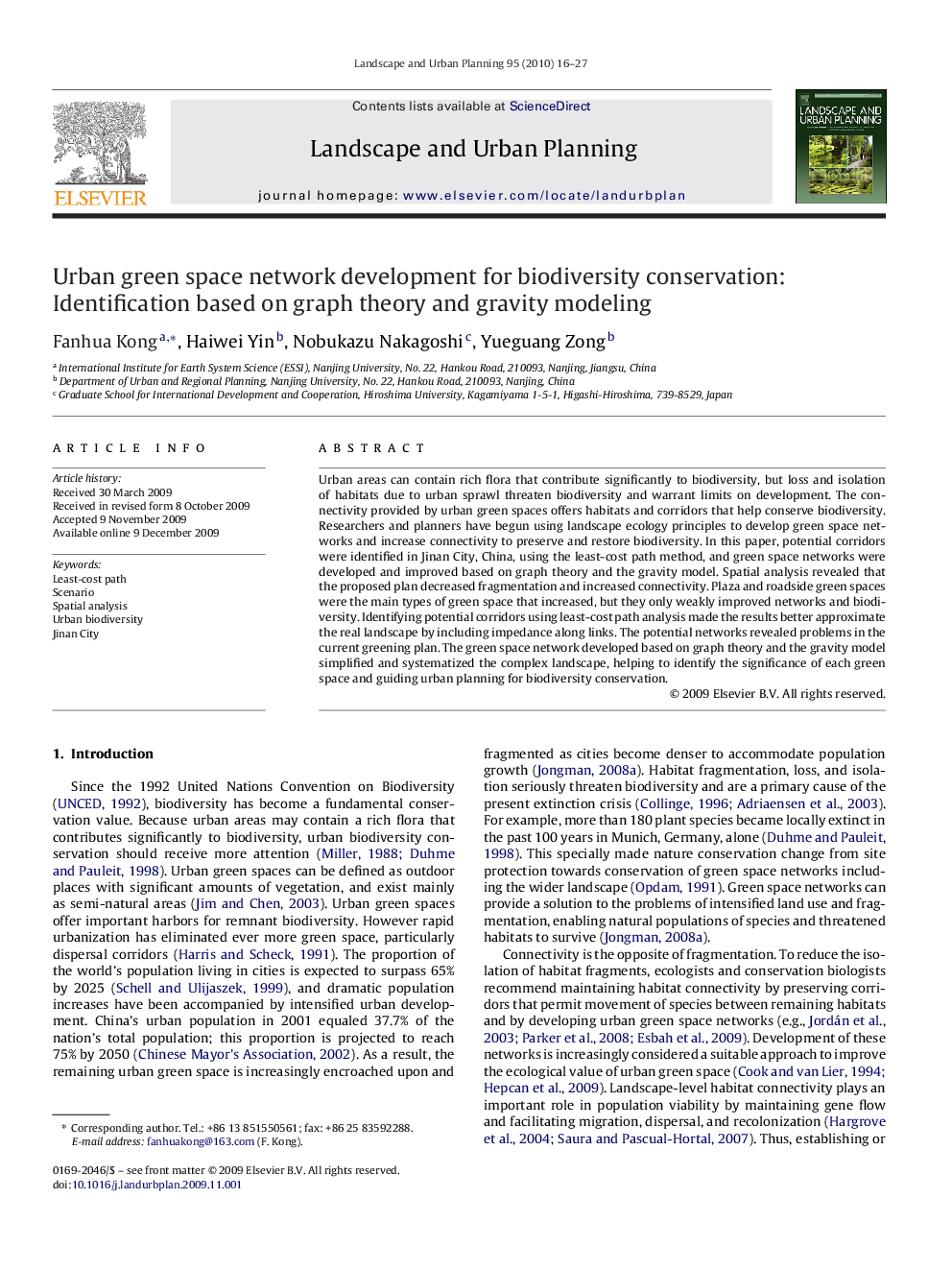| کد مقاله | کد نشریه | سال انتشار | مقاله انگلیسی | نسخه تمام متن |
|---|---|---|---|---|
| 1049775 | 1484657 | 2010 | 12 صفحه PDF | دانلود رایگان |

Urban areas can contain rich flora that contribute significantly to biodiversity, but loss and isolation of habitats due to urban sprawl threaten biodiversity and warrant limits on development. The connectivity provided by urban green spaces offers habitats and corridors that help conserve biodiversity. Researchers and planners have begun using landscape ecology principles to develop green space networks and increase connectivity to preserve and restore biodiversity. In this paper, potential corridors were identified in Jinan City, China, using the least-cost path method, and green space networks were developed and improved based on graph theory and the gravity model. Spatial analysis revealed that the proposed plan decreased fragmentation and increased connectivity. Plaza and roadside green spaces were the main types of green space that increased, but they only weakly improved networks and biodiversity. Identifying potential corridors using least-cost path analysis made the results better approximate the real landscape by including impedance along links. The potential networks revealed problems in the current greening plan. The green space network developed based on graph theory and the gravity model simplified and systematized the complex landscape, helping to identify the significance of each green space and guiding urban planning for biodiversity conservation.
Journal: Landscape and Urban Planning - Volume 95, Issues 1–2, 30 March 2010, Pages 16–27